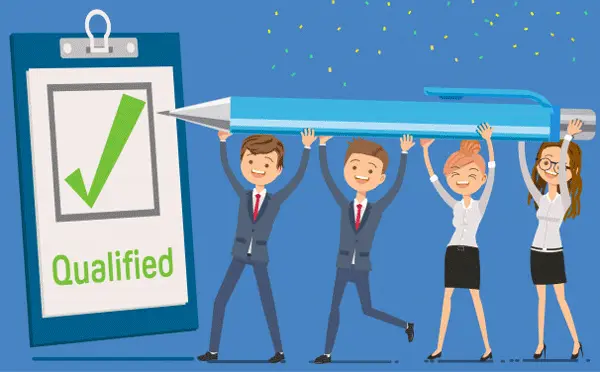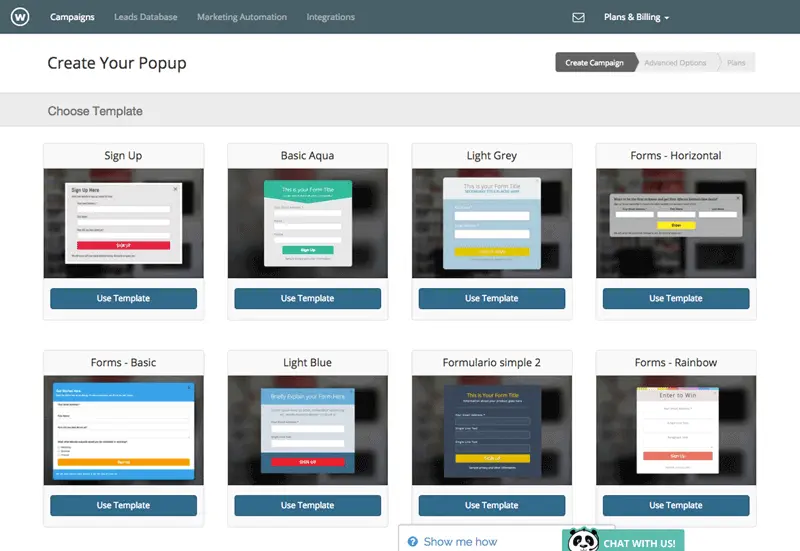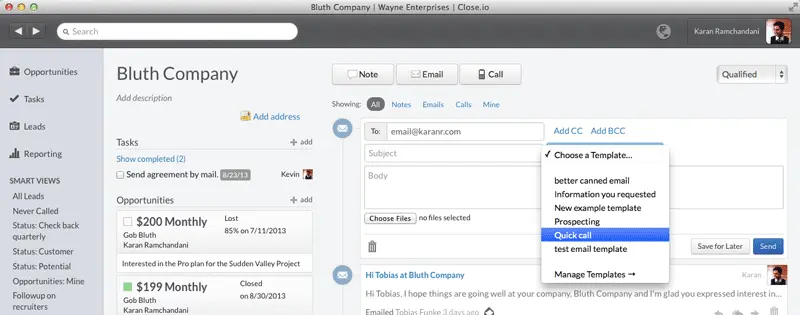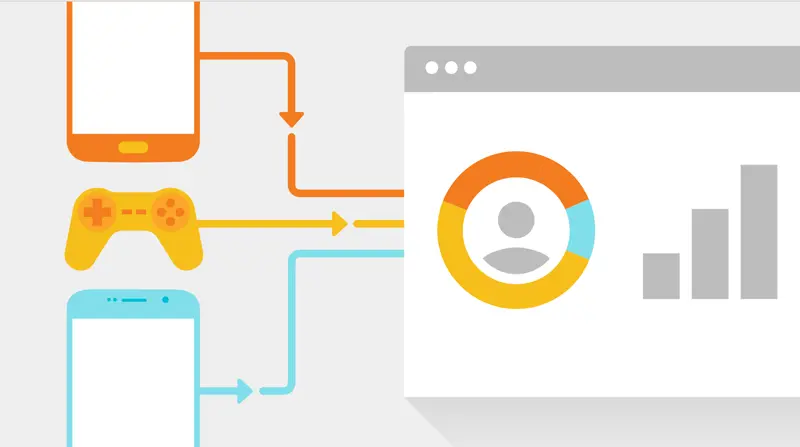Best Tips and Ways to Build the Right Sales Funnel for Your Business
Want to generate more leads and sales? Learn to build better sales funnels for your business. In this blog post, we’ll break down the best tips on how to create a sales funnel.
1. What is a sales funnel?
2. Sales funnel stages
3. Sales funnel vs. sales pipeline
4. How to qualify leads
5. Tools to manage a sales funnel
6. 7 Sales funnel tips
7. How to test your sales funnel
What is a sales funnel?
A sales funnel sometimes called a marketing funnel or a conversion funnel, is an approach that allows you to lead the client through the journey from having no idea who you are right to making a purchase.
Sales funnel stages

The sales funnel typically includes five key steps:
-
Awareness
The first level of the funnel is the awareness. At this stage, people don’t know who you are yet, and the goal is obviously for them is to encounter your content. One of the fastest methods to build awareness is through paid traffic (e.g., Google Adwords) but we also can do it through earned traffic (e.g., company's blog posts that answer people's questions, Facebook posts and Tweets, etc.)
-
Evaluation/Interest
Once people become aware of your brand, you need to build the interest. You can do this through a landing page by offering something of value (a report, tutorial, case study, etc.) in exchange for their email address.
-
Decision
At this point, you should build desire (show the benefits of your product, compare your product with a competitor's product, showcase feedback from your happy customers).
-
Purchase/Closing
Once you have convinced the potential buyers that your product/service is worth their money, it is time to ask them for action. You should take care of clear calls-to-action with emotional appeal, provide coupons, discount codes, and limited time offers.
-
Loyalty
After the purchase has been made, the loyalty stage comes into play. In order to create loyalty, take care of providing personalized offers for your existing clients, adding customers to your brand community, and sharing valuable materials that can help create the best possible experience while using your product.
Related: “How to Prospect for Sales and Close Your Deals Faster”
Sales funnel vs. sales pipeline
People often use the terms “sales pipeline” and “sales funnel” interchangeably. Yes, these two things have some similarities and can work efficiently together, but they are absolutely worth distinguishing. While a sales funnel is more about leads, a sales pipeline is about deals (it reflects what a seller does during the sales process).

Knowing the difference will allow you to align your prospect’s experience (sales funnel) with your team’s activities (sales pipeline). For instance, for the Awareness stage, you could plan to visit a local event filled with your potential customers and collect contact data from event guests to get them into your sales funnel. And for the Evaluation/Interest stage, you could plan to invite prospects to join an educational webinar. You can further qualify the leads by asking them qualifying questions during the registration process.
Related: “How to Build a Successful Sales Pipeline to Skyrocket Your Business”
How to qualify leads
Qualifying leads accurately ensures an effective sales process. Approaching a customer with a sales proposal too early presents a risk that the lead isn't well-informed about the product’s ins and outs yet, and therefore they are not ready to buy. This task of informing the customers must be left to your marketing team. On the other hand, sending a client to sales too late might result in missed opportunities, because they might have lost their interest or been intercepted by competitors.

source: Freepik
Defining MQL and SQL for your enterprise
MQLs (Marketing Qualified Leads) are the leads that are more likely to become your customers than others. These leads read your emails, engage with your posts on social networks, download your content, fill out online forms, participate in webinars.
SQLs (Sales Qualified Leads) are the leads that not only shown an interest in your product or service but also demonstrated intent to purchase. SQLs are repeat customers, those who asked about the price.
To qualify leads, do the following:
-
Verify your buyer persona
Detailed buyer personas make it clear to your salespeople who they should give priority to and invest their resources in, making their work much easier.
-
Set up trigger events
Trigger events (user actions) can help you qualify leads better. A trigger event could be a prospect downloading your whitepaper, a target organizations expanding into new marketplaces where they might need your help, a prospect changing their job title on LinkedIn, etc.
-
Verify the needs
People buy things because they have the need. If you have a solution for problems that they are facing, then you have the potential to sell your product or service to these prospects. So the need is a fundamental part of the lead qualification. One of the best practices to get insight into your potential buyer’s need (challenge) is to ask them questions.
Tools to manage a sales funnel
To manage every stage of your sales funnel more efficiently, consider using advanced sales funnel software.
Use sales funnel automation tools
-
Datanyze

source: Datanyze
The Datanyze browser extension helps you save a ton of time by putting all of your sales prospecting tools in one easily accessible spot. So learning about the company, people, and technologies behind every website you visit is quick and easy. As you browse, Datanyze insider will instantly reveal the Alexa traffic rank, employee count, and revenue of the company powering the website you are on. Users can also view a complete list of technologies the website uses and access to company's social profiles right from the window.

source: Wishpond
Wishpond is an all-in-one software that makes it easy for marketers to create landing pages, forms, contests and promotions, email marketing campaigns, and much more.
Additionally, you can use Newoldstamp, email signature maker, to create professional, branded signatures for your team.

source: Leadpages
LeadPages is a great service with a wide range of features for creating all kinds of landing pages and optimizing their performance. You will be offered a variety of customizable templates which are compatible with any platform, including WordPress, Facebook, and others.

source: LevelEleven
LevelEleven is a sales management platform that uses gamification to help sales leaders to motivate, engage and coach their sales teams. The app's best features include real-time dashboards, sales contests, achievement alerts, personalized scoreboards for sales reps, and much more.

source: Outreach.io
Outreach.io is a fantastic tool that provides sales teams with a sales dialer, email tracking, automated sales sequences, meeting scheduling, and many other excellent features.

source: Deadline Funnel
Deadline Funnel is a tool that grows conversions for digital marketers using personalized terms. Instead of customizing product launches, landing pages, video clips, and email sequences each time you want to sell your product or service, you can automate this marketing tactic and focus on optimizing your campaigns, increasing traffic, and getting more customers.
-
Close.io

source: Close.io
This platform is focused on simplifying your calls process. All calls will be logged automatically, and you won't need to enter data manually.

source: Mixpanel
Mixpanel is a system for tracking and analyzing user behavior. According to the development team, users' actions speak louder than page views. Therefore, they have created an advanced analytical platform for mobile and web systems, allowing to track user behavior in real time.
Use activity schedulers

source: Calendly
Calendly is a convenient and powerful scheduling software. Simply connect your “Google Calendar,” “Outlook,” “Office 365,” or “iCloud” calendar to the site, and Calendly will know when you have events or meetings scheduled. Then you can share the link to your page with colleagues or clients so that they can schedule meetings with you taking into consideration your personal schedule.

source: Podio
Podio is an online teamwork tool that helps with organizing projects, sharing information between colleagues, maintaining communication with customers, processing sales and managing orders.

source: Mixmax
This service makes it easy to create and schedule mailings, track emails, and make appointments in one message. Mixmax also provides other minor yet useful features for recruiters. These are excellent email templates, the “cancel” button for sent messages, built-in polls, integration with Dropbox, Google Drive, and Giphy.

source: Clara Labs
Clara Labs is an intelligent virtual assistant, scheduling appointments and helping to manage your mailbox. Simply CC Clara on your email conversations and the software will do the rest for you.

source: Assistant.to
This is one of the most effective productivity tools for salespeople. It can book meetings in seconds, with one email.
7 Sales funnel tips
This sales funnel guide will not be complete without these simple yet valuable tips.
Tip #1: Create sales funnel landing pages
Landing pages are a splendid opportunity to promote every stage of your sales funnel. A persuasive landing page can get prospects closer to the point of making a purchase. It also should help you with micro conversions like downloading a free ebook, joining your mailing list, requesting a quote or a live demo, following your company on Facebook or sharing your content with friends and colleagues.

source: Freepik
Tip #2: Use live chats
Because your customers would like to consult with you about every doubt they have, you need to be able to help them overcome their concerns and objections quickly and efficiently. So if a live chat isn't part of your sales funnel yet, find a way to fix this as soon as possible.

Tip #3: Create helpful blog posts and guides
Did you know that B2B marketers that share valuable information in blogs receive 67% more leads than those who don’t? Think of your blog as a showroom, where every piece is valuable. Do not consider it as a place where prospects come to only buy from you. Think of it as a place where they come to learn about you and your brand, see what you have to offer and decide whether they want to continue building relationships with you.
Tip #4: Run retargeting ads
Let's start with statistics. Sad but true, only 2% of the web audience converts on the first visit. To reach the users who don’t convert right away, be sure to activate retargeting ads.
Tip #5: Create communities using social media
Presence on social networks will help you make your business easy to find and simple to connect. Create a community to show your strong points and expertise in your niche. And if you want to emotionally connect with your audience, use storytelling and feedback from happy customers.

source: Appsumo group
Tip #6: Make an attractive referral program for your customers
Referral programs can help you encourage customers to spread the word about your business.
Tip #6: Listen to your clients to make your product better
Allow your customers to leave feedback by adding forms to your sales funnel.
How to test your sales funnel
In a world where we are always told "Test, test and test some more!", finding the perfect starting point to experiment on your sales funnel can be a bit of a headache. Luckily, there is a wide range of software to choose from.
Use tools to test your funnel
-
Heat maps and screen records
Use heat mapping and visitor recording tools such as Hotjar, Capturly, Crazy Egg, Smartlook during all phases of the sales funnel.

source: Hotjar
-
Google analytics
If you’re seeking to convert your potential customers (and who isn’t?) and get them to make a purchase, you need to take care of mapping out and tracking every step on their path to conversion. This is where Google Analytics comes in.
Track and analyze proper metrics

source: google analytics
To improve your sales process and your overall business potential, you need to know the numbers. The most critical sales funnel metrics to pay attention to are:
-
Annual recurring revenue (ARR)
This is the total amount of predictable profit you receive each year. For example, if you have 100 customers, and the average amount paid per month is $5, your MRR (monthly recurring revenue) is $500, and ARR is $6,000 (or $500 x 12.)
-
Customer acquisition cost (CAC)
All you need to calculate the CAC is to sum up all the costs spent on marketing and sales for a certain period of time and divide that number by the number of attracted customers. For instance:
$36,000 (spent on sales and marketing) : 1 000 (customers acquired) = $36
-
Customer lifetime value (LTV)
There are different ways to calculate the LTV. Let’s look at the basic formula:
Laura pays $30 per month for her gym membership. She has been visiting the gym for three years.
$30 x 12 months x 3 years = $1,080 of total revenue or $360 annual income.
-
Customer retention rate (CRR)
To calculate your CRR, you need to know the following variables: number of clients at the end of the period - E, number of new clients acquired during that period - N, number of clients at the beginning of the period - S. If you have this data, use the following formula:
((E-N)/S)*100
Imagine that you started a quarter with 200 clients, lost 20 of them, but acquired 40 new in return, so you ended up with 220 customers.
((220-40) : 200) * 100 = 90. In other words, your customer retention rate is 90%. Well done!
-
Revenue retention rate (RRR)
Suppose you have five customers with revenue values of $5, $4, $3, $2, $1. That is a total of $15. In the measured period, the $3 and $1 customers left you. So your RRR will be the following:
(5+4+2) : 15 = 0.73 = 73%
Conclusion
Sales funnels are an essential part of the sales process because clients’ experiences with your business will determine whether or not they become your loyal customers. We recommend to think about and plan your sales funnel ahead because only a well-thought-sales funnel strategy can bring you fantastic results.



